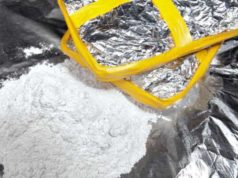
The controlled substances that are considered under the Schedule II drug policy parameters as set out by the Drug Enforcement Agency can be regarded just as dangerous as those found in Schedule I. The only difference that exists is that the controlled substances in Schedule II have accepted medical use and are used legally under those provisions, while the substances placed in Schedule I have no applications on the medical level.
The controlled substances in Schedule II of the Drug Enforcement Agency are just as addictive as those in Schedule I, but their applications in the medical realm allow them to be placed under the Schedule II drug policy provision. Controlled substances in Schedule II meet the following criteria:
The controlled substance has a high potential for abuse and/or addiction;
The drug or substance has proven evidence of being viable for use in medical treatment in the United States;
The abuse of the substance or drug can lead to severe psychological or physical dependence.
All the controlled substances under the Schedule II drug policy of the Drug Enforcement Agency and regulations have strict guidelines and restrictions regarding their availability to potential users. The controlled substances or medications are only legally available under prescription by a medical practitioner or pharmacist.
A written prescription is necessary to obtain any of the substances under Schedule II of the Drug Enforcement Agency, unless a specific and unusual emergency deems it necessary. The prescriptions are dispensed for a one-time use purpose and cannot be refilled. The controlled substance must be prescribed every time it is to be used, and a written prescription is necessary to acquire the drug or substance.
The controlled substances in Schedule II can vary in terms of their nature as well as their potency. Certain arguments have been presented regarding the classification of particular drugs or substances found in Schedule II because their potency and potential for abuse and/or addiction is as high as those in Schedule I drug policy. Because of their accepted use in the medical field they are placed in Schedule II, but some of the controlled substances have proven to be as dangerous as those in Schedule I. Controlled substances found under Schedule II provisions include:
Cocaine
Ritalin
Concerta
Opium
Methadone
Oxycodone (Percocet, OxyContin, and Percodan)
Morphine
Adderall
Seconal
PCP
Short-acting barbiturates
Fentanyl
Some of these controlled substances are used in the medical field with certain treatments and prove to be extremely effective, and thus, may be given some special dispensation for use by the Drug Enforcement Agency. Because some of these drugs or substances are so effective, their potential for abuse is also very high and are regulated by Federal drug policy. Drugs like methadone are used for heroin addiction treatments, but because of the nature of the drug, users have been found to become addicted to methadone while seeking treatment for heroin addiction.
Many of the controlled substances in Schedule II are used for pain treatments, such as morphine, codeine, and Oxycodone. Some of these drugs are prescribed for the treatment of Attention Deficit Disorder and ADHD, such as Ritalin, Concerta, and Adderall. However, even though some of these drugs or substances have effective medical applications, their potential for abuse and/or addiction is extremely high, making them dangerous without medical supervision or approval.
Schedule II substances are as dangerous as those in Schedule I, but because of their medical use they are legally controlled and allowed under medical supervision or prescription. The Drug Enforcement Agency is given the difficult and complex task of regulating and controlling these drugs and substances. As the potential for addiction and dependence shifts to prescription drugs, the Drug Enforcement Agency must also shift its focus of concentrating more on the abuse of legal and prescribed medications, and not just illicit or illegal drugs.

























